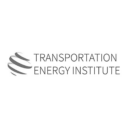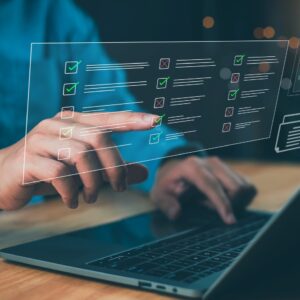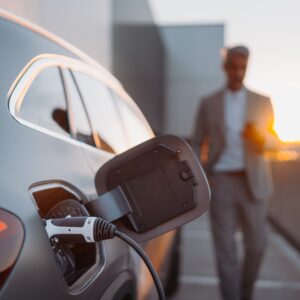
Insights
Decarbonization – From Energy Sources to Retail Deployment

With the alternative fuels market gaining significant traction, business leaders must grasp how this transition will impact their organization and how they can be part of the change toward decarbonization. As retailers consider installing EV (Electric Vehicle) or Hydrogen Fuel Cell chargers to handle the increasing consumer demand, they must realize that installing these chargers alone will not satisfy their overall cleaner energy goals. Being genuinely green requires cleaner energy sources as well. Anila Siraj, EV & Alternative Fuels Lead at Impact 21, a W. Capra company, put it best— “Green energy is needed to run green chargers which supply green vehicles. This spans the entire supply chain, from ‘upstream’ energy distribution through ‘downstream’ retail deployments.”
Is energy getting greener?
As of 2023, non-fossil fuel sources accounted for 86% of the United States’ new electric utility generation capacity. Additional efforts to decarbonize the US power grid are in the works. Governments are investing in replacing fossil fuels with cleaner energy like solar, wind, and hydrogen.
Siraj explains, “The main focus has been on improving electricity generation capacity with cleaner sources, demonstrated by thousands of current solar projects. However, governments are aware that other clean energy initiatives, both upstream and downstream, are needed to achieve their overall greener energy targets. Through direct funding, tax credits, and grants, financial support is available for a range of programs, including EVs and EV charging as well as other renewable fuels.”
Despite the optimism for greener energy solutions and the legislation introduced to support this direction, many naysayers don’t believe that ‘alternative fuel’ vehicles will fully replace ICE (internal combustible engine) vehicles any time soon. In contrast, some OEMs (Original Equipment Manufacturers) have stated that they will stop manufacturing ICE vehicles.
This uncertainty has many retailers in the US holding out for election results to understand how the next administration will handle climate change and what that means for their business direction.
What are the future energy demands that we need to prepare for?
There is concern that the electrical grid will need help coping with the number of vehicles that will need charging. To completely electrify road transport and meet US EV adoption targets, it is estimated that 25% more capacity is needed. In addition, the exponential growth of computing power to process petabytes of data for AI and data mining adds to the strain on the electric grid as the massive server farms are also powered by electricity. Some economies are actively implementing measures to increase grid capacity to meet the growing demand, but others are yet to make any significant progress.
In the US, as the energy supply needs increase, much of the current capacity based on fossil fuels is being retired and being replaced by cleaner sources. In 2023, 56.1 gigawatts (GW) of new capacity was added, primarily through solar, wind, and battery storage, while nearly 100% of the 14.5 GW of capacity retired was based on fossil fuels.
Erika Curtis, Lead at W. Capra, sums this up— “Funneling all the generated energy back to the grid is unnecessary. Micro-grid solutions like domestic solar panels, off-grid storage batteries at solar farms and Ammonia-Hydrogen conversion have great potential. Charger providers are looking at both options to supply their chargers with clean energy.”
When should we enter the EV market?
As regulators continue to introduce legislation, retailers must embark on the EV or Hydrogen Fuel Cell path before their region starts experiencing a decline in liquid fuels. The potential benefits of this transition, including reduced environmental impact and increased consumer demand, may alone justify the long-term investment.
W. Capra sees how renewable sources, both upstream and downstream, impact your business. As leaders who collaborate with the Department of Energy (DOE), we are positioned to guide you on sourcing and using renewable energy, provide you with a proactive approach to entering the market, and empower you with the strategy you need to feel secure and confident with your decisions.
“From defining your ROI to selecting a suitable partnership or deployment model, we are fully prepared to help you integrate EV or Hydrogen Fuel Cell charging into your customer journey while aligning with your greater consumer experience strategy,” notes Siraj. Our comprehensive approach will ensure you’re equipped to enter the market at the right time and location to meet consumer demands.
W. Capra is here to help you design the roadmap that ensures you are ahead of the curve and ready to meet your customers as adoption increases. For further discussion on how to approach the market and be part of the drive towards change, please reach out to Anila Siraj at asiraj@impact21.com or Erika Curtis at ecurtis@wcapra.com.
Related Insights
The Cost of Poor Quality Assurance for Point-of-Sale and Back Office Systems in Petroleum Retail
Quality Assurance (QA) is vital to ensure that those who use the tool daily can replicate basic functions AND access the advanced technology and process automation they were promised during sales demos.
CSP Magazine – What C-Store Retailers Need to Do to Succeed in 2025
This article, by W. Capra’s Tom Newbould as a guest author, was published in the February 2025 edition of CSP […]
Navigating the Future of Electric Vehicles Amidst Administrative Change
As we bid farewell to 2024 and welcome 2025, the future of the electric vehicle (EV) market in the US […]
The Changing Role of the CIO
It used to be that a retailer’s chief information officer would spend most of his or her time concerned with […]
Want to stay in touch? Subscribe to the Newsletter











